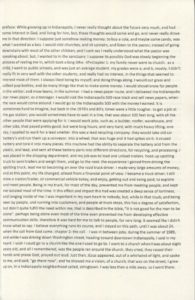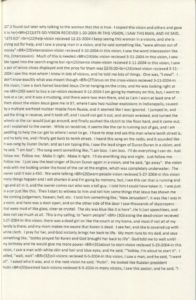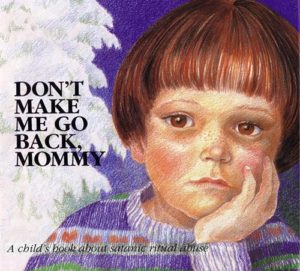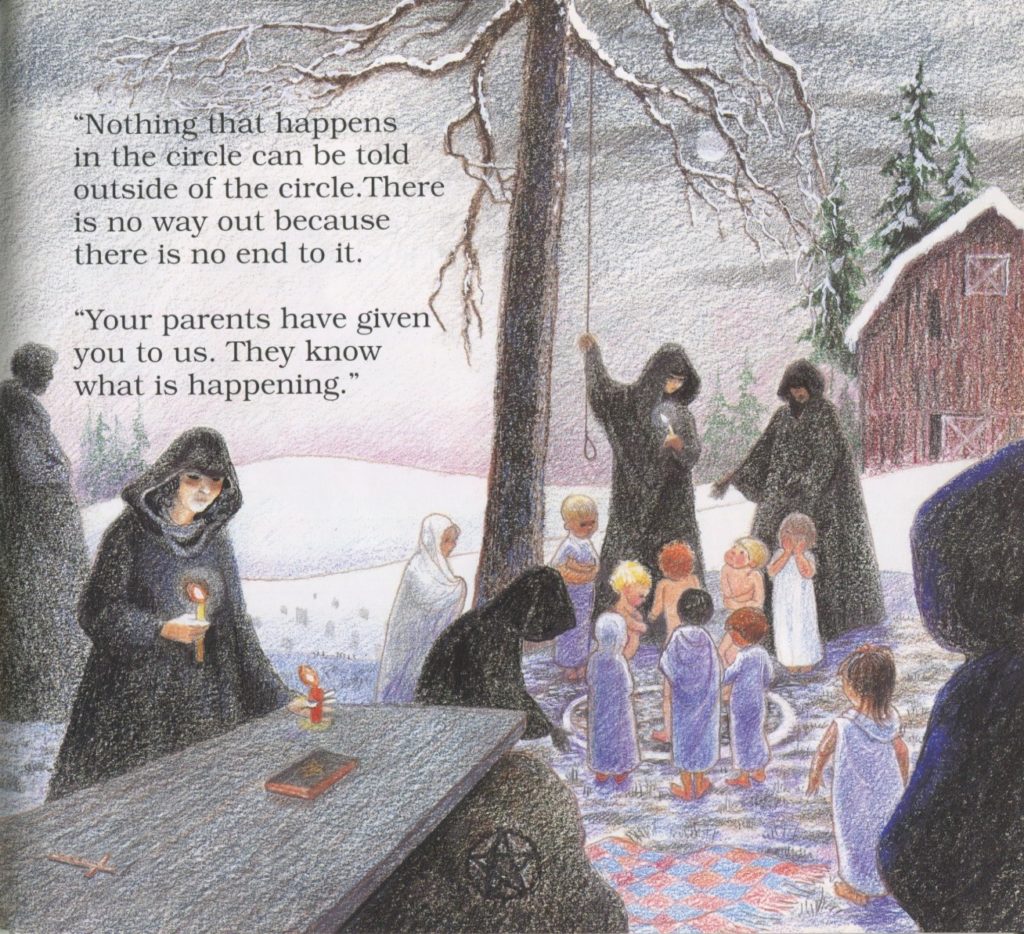Book: The Abductors: Sinful Series 1
Author: Doug Brunell
Type of Book: Non-fiction, cinema review, film history
Why Do I Consider This Book Odd: Because the film is a huge, steaming pile of horse shit but Brunell’s love and enthusiasm for this type of grindhouse/sexploitation genre actually made me second guess my initial reaction.
Availability: Published by Chaotic Words in 2016, you can get a copy here:
Comments: Jesus Allah fuck, this is a terrible film. I’m not going to say you in particular would hate this film because a lot of you have weird tastes or you wouldn’t be reading here in the first place. Also, if you mute it so that you are not subjected to appalling dialogue delivered by people who probably would have been better used in outright porn, there are some interesting things going on. For example:
–If you are tired of seeing buoyant, surgically enhanced breasts, the natural boobs in this film may be just what the doctor ordered. Additionally, people tired of the PAWG trope will delight in the mostly flat, often saggy butts found on the women (and men) in The Abductors.
–How do you feel about pubic hair? Fans of the bush will love this movie.
–Do you have strong opinions about hairy chests on men lacking even the 1970s Burt Reynolds version of muscles, who look hilarious when they get handcuffed to trees? You are in luck.
–Do you harbor unresolved and unsettling feelings about helicopters, especially when you see them flying low over trees or landing on lakes so small you sense that they received a fine for even trying to land, let alone trying in the dead of night? Take this film to your therapist. It could be key in your recovery.
–Have people told you that if the Olympics had a “cringe” category, your grimaces could bring home a gold medal? Do you need practice covering up second-hand embarrassment so that you can endure your Uncle Jack’s casual sexism as he gets drunk at Christmas dinner? Consider this film your training camp.
So it’s clear that this is a bad, bad film. And that’s okay. Without bad films we wouldn’t have had Mystery Science Theater 3000. The bad film has its charms, and Doug Brunell has such a keen eye and sympathetic take on the genres that bring us terrible films that if you read his books after you watch the films he discusses, you can genuinely find yourself wondering if maybe you got it all completely wrong. To be completely frank, you probably won’t find much in Brunell’s writing that redeems this film, nor does he serve as an apologist for bad cinema (he refers to this film as being part of a “sleaze saga”). Rather, he accepts films as they are, discusses the times that spawn such films and the career arcs of the people involved. He recognizes the film’s many (many, many) flaws, but he also has such a great knowledge of genre, the specific cinematic tropes at work when older schlock was released, and the various ways filmmakers attempted to subvert those tropes, that the background he gives as he discusses the movies is the price of admission for the Sinful Cinema series.
And to be blunt, there is charm to schlock. For interior designers, it’s the Memphis Group. For bibliophiles, it’s the “so bad it’s good” that writers like Richard Laymon and VC Andrews bring to the table. What would bad music discussions be without The Shaggs and Jandek? When you read Brunell’s take on schlock films, you see the charm. Whether or not the charm works on you is subjective. But when you read Brunell’s work, objectively you see how one bad movie’s reach can extend into cinema you’d never expect from a sexploitation film. Brunell sees how it is that the worst can be a link to the best, or maybe just a link to something that isn’t quite as bad. His knowledge and love of the topic are infectious, so much so that I actually sat through the whole of The Abductors so I would be assured I could follow his book about the film.
Quick synopsis: This film is the second in the “Ginger” trilogy but if Doug Brunell doesn’t write a book about the other two films I’ll be damned if I watch them. So the plot is simple: White slavers are kidnapping women to sell to men who can blow $100k in 1970s money on cheerleaders taken hostage and “trained” to be excellent companions for really old men who wear Sansabelt slacks and live in a split-level home with orange shag carpet. After a convertible with three witless cheerleaders is run off the road, the three women kidnapped, a private investigator calls in Ginger, a woman who may be a spy, may be a detective, but never wears a bra, to help him.
(Honest to god, the first time we see her in street clothes, she is wearing a cropped denim vest with no buttons or zipper and no top underneath. Later when she tries to seduce a bad man who unties her bizarre top that looks like the old Dallas Cowboy Cheerleaders’ tie uniform but as imagined by Fredrick’s of Hollywood and made by a hippie who learned to crochet in rehab, she takes forever to retie it and when she does, she ties it with her boobs outside of the fabric. She spends a lot of time topless or naked. Oh, and I remember this most clearly: the credits say “Chantilly Place” provided Cheri Caffaro, the lady who played Ginger, with all her “knits.”)
Together Jason, the private eye, and Ginger manage to track down the slavers by recruiting a pretty private eye and having her swallow a pill of some sort that allows them to track her for up to 25 miles. But before this happens, Ginger gets involved with a pudgy dude who looks like Steve Majors but isn’t (the scene where he dances with Ginger in what appears to be the courtyard of a rest home for geriatric hotel band members is cringe-gold – she’s actually got maracas). Pretty private eye gets kidnapped by slavers, Ginger watches her be relocated on a helicopter on pontoons, and is so upset she befouls a white shag carpet with like-Steve-Majors-but-isn’t and dun-dun-DUN, afterward he takes her hostage because SPOILER ALERT: he’s the head slaver.
Predictable stuff happens – all the men involved are dumb and will spill any number of beans if you show them boobs or grab their dick. Sex is had atop a pool table. An enormous henchman who “trains” the girls gets kicked in the crotch by a girl and then kicks her in the crotch in response (his name is weird and I cannot recall it now but Mr. OTC and I called him “Jablowme”). A woman gets gut punched, sexual torture is implied, but it all ends well when Ginger escapes and gets all the information she needs out of like-Steve-Majors-but-isn’t by, and I shit you not, restraining him in a shower, spraying him with water from the shower head and soaping him up. He is utterly undone by the water spray, begging her not to spray his chest anymore. Brunel actually manages to discuss this scene in a thoughtful manner that never would have occurred to me.
The three kidnapped girls end up really liking the men who bought them and stay with them. Ginger and Jason are nearly shot by a banker’s desk guns, but good prevails, the end.
The biggest problem with the film is that no one can act. Ginger speaks only in double entendres and they are delivered with a flat, smirking dullness. The men are all dumb or speak in gangster-ese. Every man seems like he’s dressed like a leisure-suit Harlequin, all the women have their nipples exposed at all times, and what is represented as the height of luxurious domestic decadence would need to be fumigated to qualify as a modern Motel 6. The abducted girls only speak when they are introduced to the used car salesmen who purchased them, asking them innocent questions over dinner, wondering how they will be able to explain to the neighbors that they are sex slaves. But the plot, oh the stupid plot, and the acting, tend to make all the excellent cheese turn into something that is merely cheesy.
Most notable is how difficult it will be for modern audiences to stomach this film.
This 90 minute film is sometimes a chore to watch. Bad acting, inexplicable costume and hair changes in the middle of a driving scene, and the idea that all women need is either a skilled lover or to be raped in order to “break” them all work to erode the average viewer’s patience, tolerance and sanity. Watching young women’s breasts be groped and twisted as they are told they are about to be tested for their sexual skills is something rarely seen in current non-pornographic, semi-mainstream or mainstream films, though it was a bit more common place in the daring ’70s.
But applying current mores to an old film should only be done when one is comparing the changes, not condemning that which is outdated for being outdated. Brunell doesn’t do that and his refusal to condemn these films for their lack of PC content is refreshing. He actually reproduces a couple of lines from an Amazon review that remarks that this film is an affront to all that is politically correct. But placing the film in the context of the time when it was made, Brunell points out that while the film is sexist, even as it tries to make Ginger into a badass investigator/spy who can kick ass and suck cock and always solve the case, it is notably lacking in the casual racism that was part and parcel of the sexploitation and grindhouse film industry.
And because he has watched all three Ginger films, Brunell can sincerely explain how this film is an improvement upon the first, that Ginger has a character arc that was as important to the filmmaker as showing her boobs in every scene. I think that’s important to know, that underneath it all, goals were set and achieved and that some people may have actually improved their acting chops. This was someone’s artistic vision – they were trying very hard to make a good movie.
The best part of Brunell’s examinations of these films is his look at the people in the films and where they ended up. He has an interview with Jeramie Rain, who played “Jane,” one of the three abducted cheerleaders (she’s the one with the short dark hair, which naturally means she’s the one who was best suited to be a dominatrix, hilariously beating the bed next to her new owner with a double-coiled black whip). Rain is very notable for her role in The Last House on the Left, the Wes Craven film that fucked me up so badly that I will never forget Mari’s near-pre-Raphaelite death scene, her hair spreading out into the water as she dies. Rain plays Sadie, the psychopathic moll who delights in the violence her male friends inflict on the girls they abduct. Rain has some interesting stories about the film.
Brunell also notes that future porn actor Harry Reems, from Deep Throat, has a role in this film of the “blink and you’ll miss it variety.” Best of all, he shows the direct line from the director of this sleazy and unintentionally hilarious film to a lucrative Disney franchise. The cast info at the end of Brunell’s books never fail to surface some WTF details that show how small the entertainment world really is.
So what I am trying to say here is that this is a terrible film and you should only watch it in conjunction with Brunell’s Sinful Cinema series. The worst film has to offer is often swallowed easier when you have someone who is knowledgeable in the genre, both sympathetic to and willing to discuss with humor the film’s many flaws, and able to write about it all in books that inevitably are better than the films that Brunell examines. I highly recommend you check out Brunell’s work.
And yeah, this is more Odd than October, but maybe if you watch The Abductors, you’ll find the perfect Halloween costume. Seventies banker, hot pants cheerleader, plaid-suited sex lord, or maybe you can just walk around naked like Ginger did. All you’ll need is a platinum wig!










